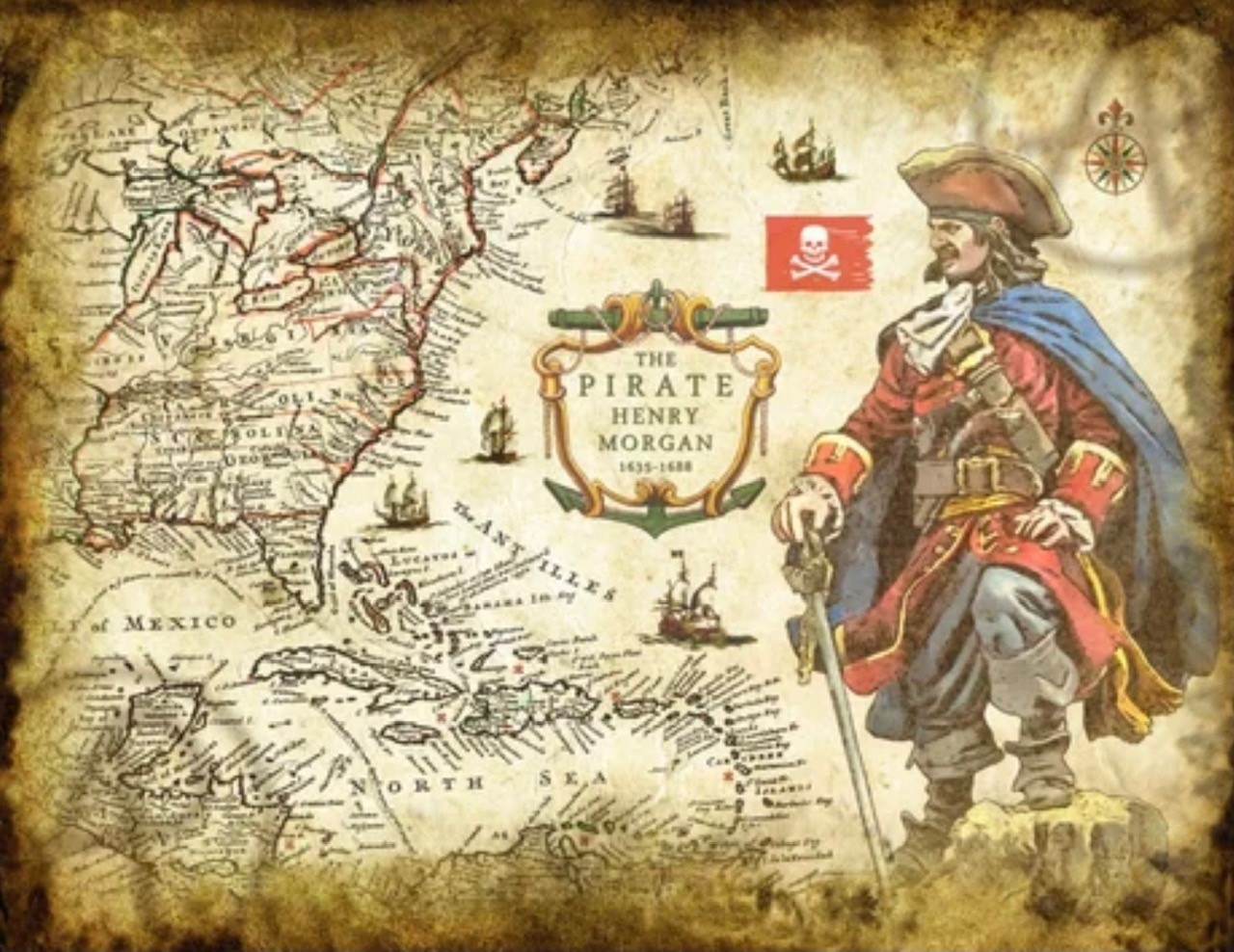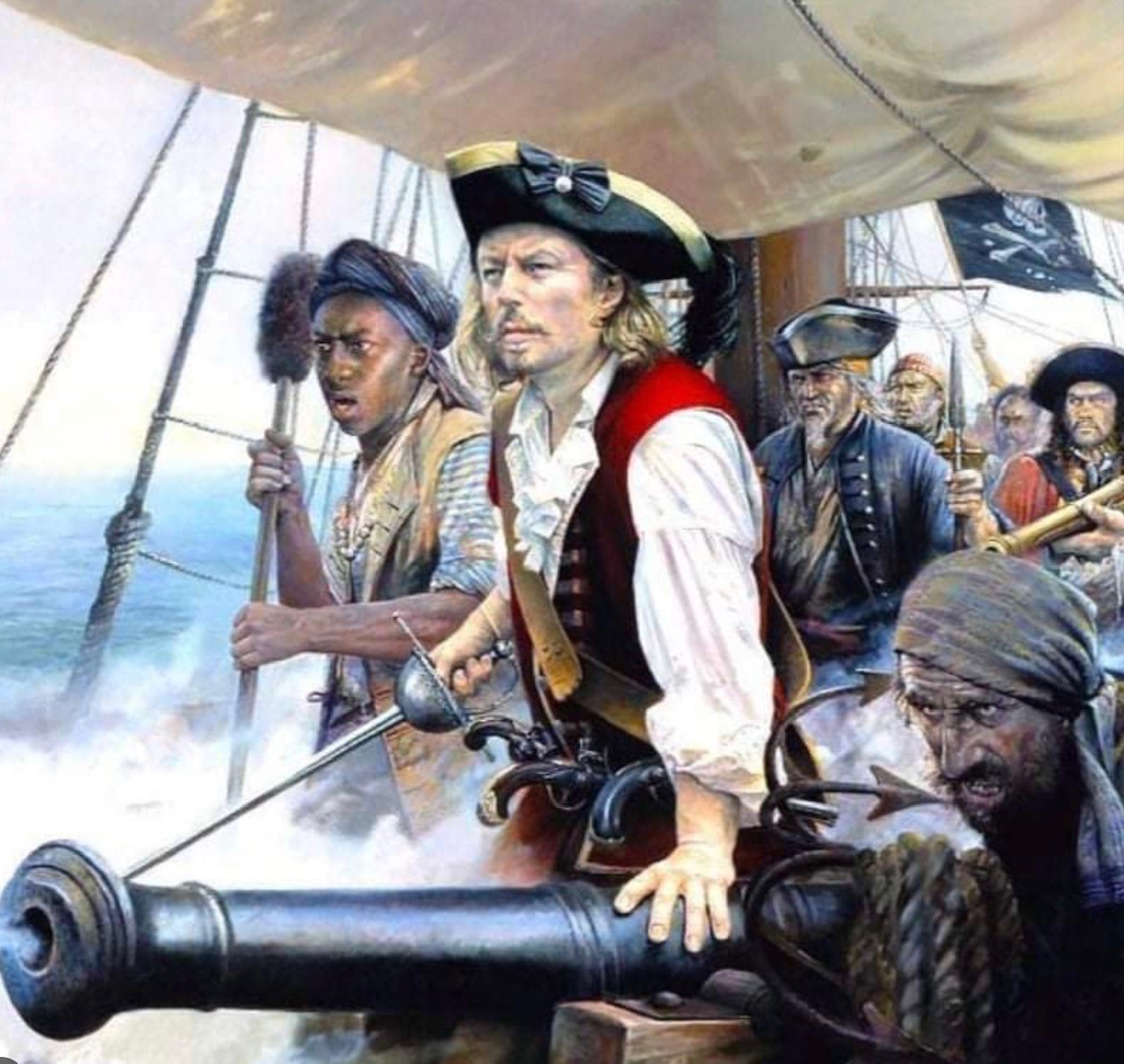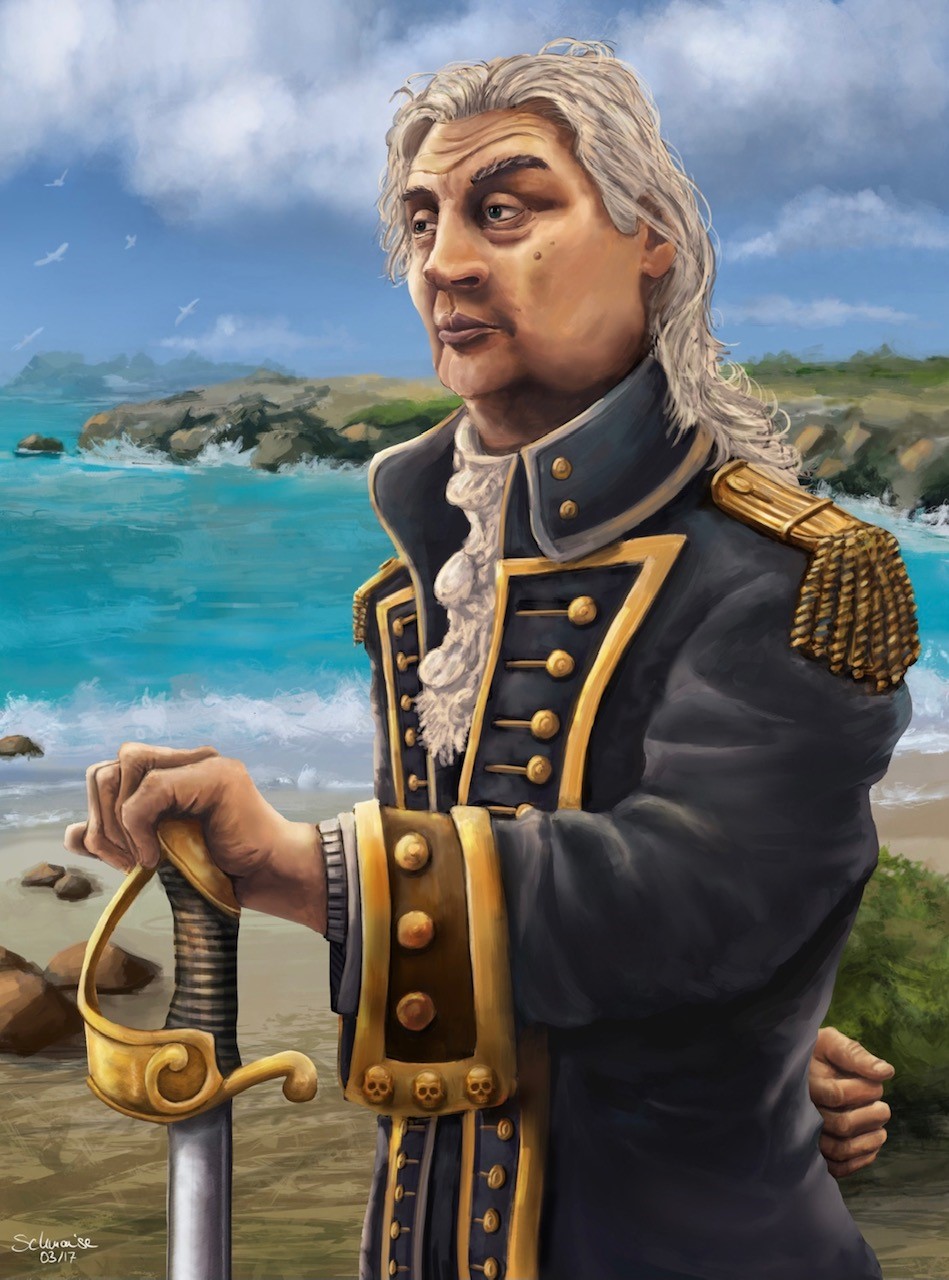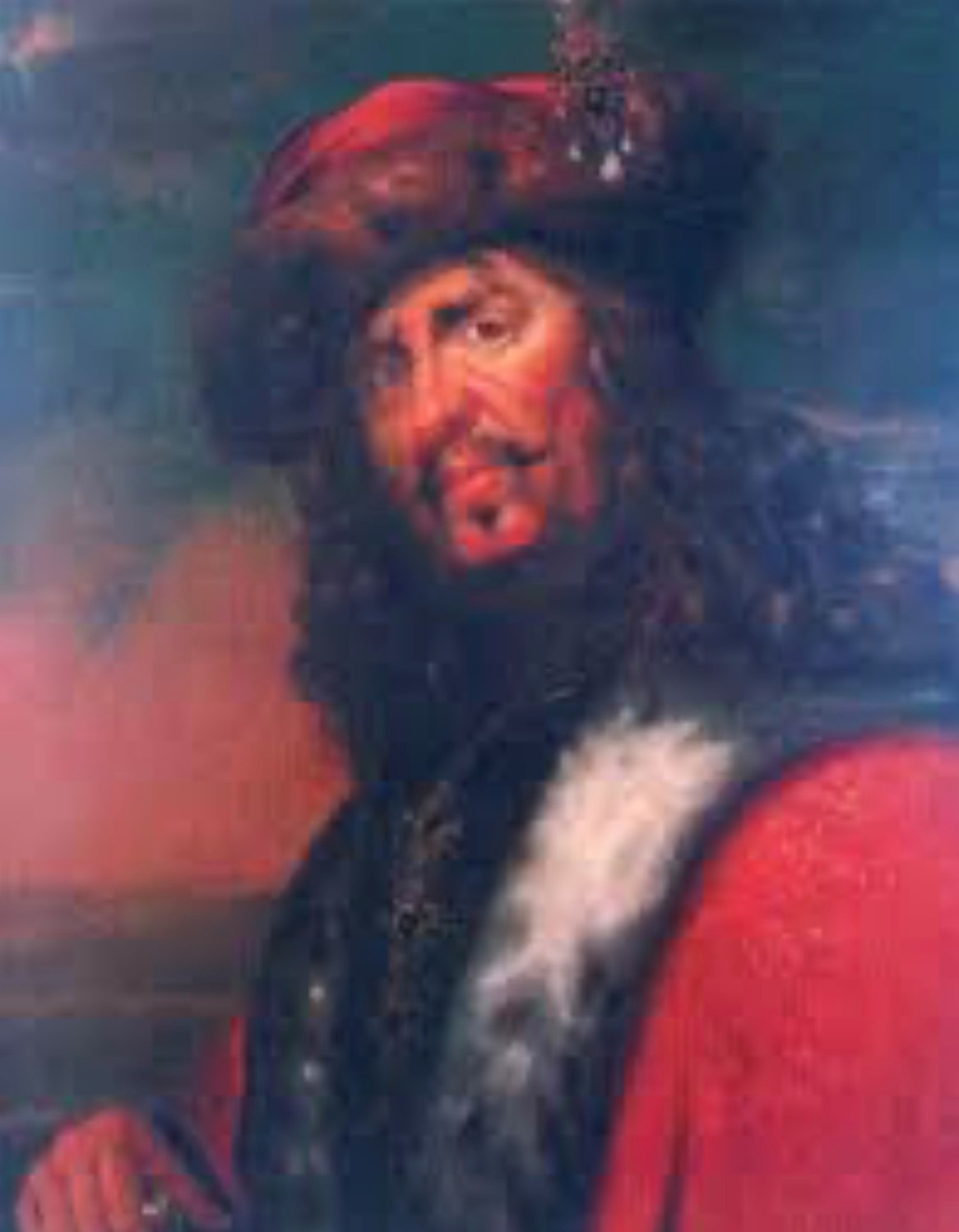Pirate Hall of Fame
Jeanne de Clisson “The Lioness of Brittany", 1300–1359, France, Active: 1343-1356, My Revenge. A Breton noblewoman who raided ships for the French and later the English during the Hundred Years' War. After her husband was tried and executed for treason, she sold her estates, raised a force of 400, started attacking French forces in Brittany. She switched sides and fought with the English, raiding French castles, as well as merchant and military vessels. At the end of the Hundred Years’ war she was granted a barony in a port town in Brittany.

Heyreddin Barbarossa “Redbeard”, 1478-1546, Active: 1500-1545, Turkey. Barbary Coast corsair who terrorized shipping and coastal seaports of Greece, Italy, France, Spain, Portugal. Secured the Mediterranean for the Ottoman Empire, became Admiral of that empire’s fleet.


Mary Wolverston “Lady Killegrew”, 1525-1587, England. known for her pirate activities along the Cornish coast. Mary was the daughter of a Lord Phillip Wolverton, a former pirate, and later married Sir Henry Killigrew, a pirate who was later made a Vice-Admiral by Queen Elizabeth I. While Henry was employed to uphold maritime law, some ex-pirates were engaged as "privateers," sailing under the favour of the crown to amass illicit profits for England. Mary was known to be a champion of her husband's criminal activities. She redesigned their home at Arwenak castle to hide stolen goods, cut deals with smugglers, and raided ships.

Grace O’Malley “Pirate Queen of Ireland”, 1530-1603, Ireland. Lady Ellen, of Gaelic nobility, started sailing at age 11 on her father’s ship. Became leader of the O’Malley clan and excelled at seafaring activities, defended multiple incursions of hostile clans and occupation attempts by English forces. Fearless leader by sea, ruthless plunderer of several castles and land up and down the west coast of Ireland, captured large quantities of loot. Sailed up the Thames for a formal negotiation and treaty with Queen Elizabeth I.


Francis Drake, 1540-1596, England, Golden Hind. Privateer commissioned to capture Spanish ships and treasure in the West Indies, Spanish Main, and off the west coast of North and South America. Very profitable plundering, at one point 20 tons of gold and silver treasure looted in Panama most of which he buried but later recovered. Circumnavigated the globe, also fought the Spanish Armada.


Francois L’Olonais, “The Bane of Spain”, 1630-1669, France, Active 1660-1669. Started as an indentured servant, gained freedom, made his way to Tortuga where he became a Buccaneer. Known for his ferocity and cruelty, he captured and pillaged Maricaibo and several other Spanish settlements and garrisons in modern day Venezuela. His next excursion led to Central America where he started plundering coastal settlements. His ship ran aground in shoals in modern day Nicaragua, yet he led his crew inland to plunder several towns. His crew was ambushed by Spanish soldiers. After escaping, he was ultimately killed by local indigenous people.

Henry Morgan, 1635-1688, Wales, Satisfaction. Privateer in the Spanish Main, became wealthy while plundering several ships and settlements. Led a large band of pirates to plunder Panama City. Purchased 3 large sugar cane plantations in Jamaica, later became interim Governor of the Jamaica colony. Captain Morgan rum is named for him.


William Kidd “Captain Kidd”, 1645-1701, Scotland, Adventure Galley, also Adventure Prize. Privateer and pirate on the Spanish Main, Eastern Main, the coast of Africa, and the Indian Ocean. Legend has it that he buried treasure at any of several locations in New York, New Jersey, Connecticut and Oak Island. Treasure was found at Gardiners Island, NY, and sent to England as evidence against him at trial. Turned himself in but was hung for piracy.


Thomas Tew, 1649-1695, England, Amity. privateer turned pirate. Embarked on a pirate voyage, pioneering the Pirate Round by sailing around the Cape of Good Hope, Africa to the Indian Ocean. Made a fortune in the Red Sea with his capture of an Indian Mughal Empire ship loaded with gold, silver, jewels, ivory and spices. Settled down in Newport, Rhode Island to a life of luxury, but returned to piracy with a second voyage round the Cape to the Indian Ocean. He was killed in battle when he took a direct hit by a cannon shot from a Mughal Empire ship.


Henry Every “Arch Pirate” “King of Pirates” 1656-1696, England, Fancy, served on an English warship whose crew mutinied after months of poor treatment. Elected captain, turned pirate, and embarked on a two year highly successful plundering spree in the Caribbean, off the coast of Africa, and the Indian Ocean. Scored one of the greatest hauls ever made by pirates. Escaped arrest, death and retired from piracy, a legendary pirate who inspired others to take up piracy.

Joseph Bannister, ?-1697, Golden Fleece. English merchant turned pirate. Merchant trader sailed profitable trade route between London and Jamaica for years. Turned pirate late in his career for unknown reasons, and subsequently captured a large number of ships with the powerful Golden Fleece. Was captured and brought to trial in Jamaica. Bribed the witnesses against him and talked his way to a not guilty verdict. Despite being still held captive, Bannister escaped prison, recovered his ship with the assistance of his loyal crew and sailed off to freedom to continue his piracy. Two English warships tracked him down months afterward while his ship was beached for repairs. Already popular among pirates, he became a legend when he defeated the warships after 2 days of battle. Bannister was finally captured while hiding out along the Mosquito coast of Central America. Upon arrival to Port Royal, Bannister was executed without trial on board his captives' ship.

Amaro Machado “Amaro Pargo”, 1678-1747, Ave Maria, Spain. Privateer and trader who commanded a small fleet, noted for his extensive commercial success, but also systematically plundered several English and Dutch merchant ships in the Caribbean and the Atlantic shipping lanes for 40 years. He brought the majority of the captured loot to Spain. Spanish national hero, battled several of the notorious pirates of his day including Blackbeard.


Benjamin Hornigold, 1680-1719, England. Captain of the Ranger, one of the most heavily armed ships in the region, and commanded up to 5 ships. Pirate then privateer, captured and looted several Spanish and Portuguese vessels in the Bahamas and West Indies. Established the Republic of Pirates based in Nassau, Bahamas. Accepted a pardon for his piracy and became a privateer. He died when his ship was wrecked by running aground on a reef during a hurricane.


Edward Teach “Blackbeard”, 1680-1718, England, Queen Ann’s Revenge. Privateer turned pirate; one of the most feared pirates in history. Ruled the Caribbean and the eastern coast of North America. Commanded up to 3 ships that plundered multiple merchant ships. Cultivated a fearsome reputation. He was killed in hand to hand combat off North Carolina coast by privateers whose ship he and crew had boarded.


Charles Vane, 1680-1721, England, Lark, Ranger. Highly skilled in navigation and ship combat skills, plundered many ships in the Caribbean and off the Eastern North America coast with his small fleet of ships. One of the leaders of the Republic of Pirates. Infamous for being unusually cruel to captured pirates and sailors, he evaded privateers targeting his arrest for years. His ships were destroyed in a hurricane, was marooned on an uncharted island, but discovered, arrested, and subsequently hung.


Jack Rackham “Calico Jack”, 1682-1720, England, The Kingston. One of the most unique pirates of the Caribbean in that he was not regarded as a good naval tactician or great fighter, but used political skill, cunning and backstabbing for his success. Did not amass incredible wealth. Well known for his Jolly Roger skull and crossbones flag, his distinctive clothing, and having Anne Bonny and Mary Read in his crew. Captured and executed after his two years of piracy.



Mary Read 1685-1721, England, Active: 1708-1721. Needing to seek employment at age 13, Read dressed as a boy to gain employment on a ship. Eventually joined the British Navy, but quit this to join a Regiment of Horse in alignment with the Dutch. She married a fellow soldier, then purchased and ran an inn, but her husband passed soon afterward. She then boarded a ship bound for the the West Indies, but it was captured by a pirate ship and she subsequently joined the crew. Ultimately settled in the West Indies where she met Calico Jack Rackham and joined his crew, dressing as a man alongside Anne Bonny. Her time as a pirate was successful but short lived, as she, Bonny and Rackham were arrested in November 1720. Spared execution due to her pregnancy but died of a severe fever in prison, April 1721.


Anne Bonny, 1697-?, Ireland. Migrated to the colony of Carolina with her father at age 10. Married pirate James Bonny in 1718 and embarked on a brief pirate career. They ultimately settled in the Pirate Republic in Nassau. She divorced Bonny, joined pirate captain Calico Jack Rackham’s crew and resumed piracy in the Caribbean for a few years. The crew was ultimately captured, tried and executed with the exception of Anne Bonny (and Mary Read) who was given a stay due to her pregnancy. Little is known of the remainder of her life.


Stede Bonnet “The Gentleman Pirate”, 1688-1718, Barbados, Active: 1717-1718, Revenge. Wealthy landowner in the Barbados, decided to turn Pirate, bought a ship, hired a crew and embarked on a life of piracy along the Eastern seaboard of North America. One of few pirate captains to pay his crew. Teamed up with Blackbeard on many plundering adventures. Was pardoned by the North Carolina governor and received a commission as privateer against Spanish shipping. He soon resumed his pirating ways but was eventually captured after battling for several hours with the colonial navy. He was tried, found guilty but escaped. Was recaptured and executed in Charleston.

Edward Low 1690-1724, England. Captained a small fleet of three or four ships that captured over a hundred ships, burning most of them during a four year career. Terrorized shipping lanes off the coast of New England, the Azores, and in the Caribbean. Notorious for torturing and murdering many of his victims. His own crew mutinied and marooned him.


Samuel Bellamy “Black Sam” 1689-1717, England, Sultana and Whydah Galley. English sailor turned pirate, the wealthiest pirate, captured 53 ships in one year. Good tactician, usually 2 ships in coordinated attacks, the Whydah Galley, powerful with many cannons, and the light and fast Mary Anne. Democratic leadership style, his crew called him “Robinhood of the Sea”. Perished when the Whydah was destroyed by a violent nor’easter storm off Cape Cod, Massachusetts.

Edward England, 1695-1721, Ireland, Pearl, Fancy. Known for his kindness and compassion as a leader. Refused a pardon offered to all pirates by the king of England and continued the plundering of several ships in the Caribbean and then off the coast of Africa. Engaged in a fierce naval battle with James Macrae, a Scottish captain of the British East India Company, that lasted over 3 hours and caused both ships to run aground on an island where the battle continued. England was voted out as captain, because he let the captured Macrae go free, and subsequently marooned on the island of Mauritius. He and loyal crew mates built a boat and sailed to a pirate haven in Madagascar, where he later died of tropical disease.


Bartholomew Roberts “Black Bart”, 1695-1722, Wales, Royal Fortune. One of the most successful pirates of all time, captured and looted over 400 ships spanning a three-year career. He terrorized the Caribbean, eastern coast of South America, the eastern coast of North America up to Newfoundland, and the coast of Africa. Killed by grapeshot fired by privateers of the HMS Swallow. His death marked the end of the Golden Age of piracy.


Zheng Yi Sao “Ching Shih”, 1775-1844, China. Perhaps the most successful pirate, commanded a fleet of 400 ships with over 40,000 pirates at its height in the South China Sea. Negotiated a surrender to Chinese authorities and was able to retain a substantial fleet. After her piracy career, she lived a peaceful and prosperous life.


Jean Lafitte “Terror of the Gulf”, 1780-1823 Active 1810-1823. French pirate and privateer in the Gulf of Mexico. Operated as a merchant in Bartaria Bay and New Orleans and ran a profitable smuggling organization with his brother. He later engaged in piracy in the gulf. Legendary during his life for the exploits of his smuggling, piracy, profiteering, diplomacy, and interaction with authorities, several rumors exist about his death. The most compelling is that he faked his own death and retired with his millions in North Carolina.













































